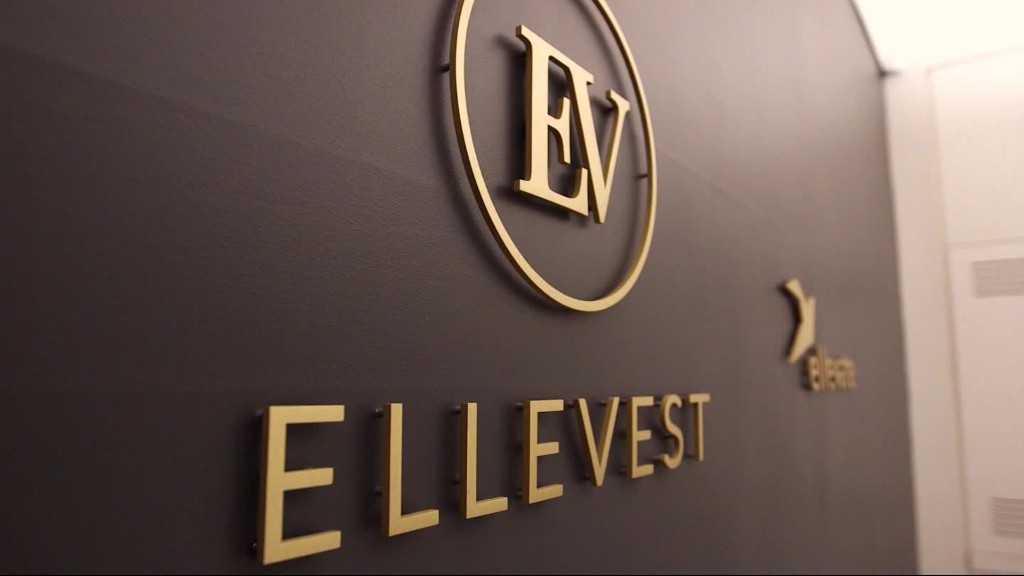
Thinking of trying that new restaurant? What about those shoes you've had your eye on?
Sure, you've got big plans for that extra $200 in your pocket. But none of those will actually make you more money in the end.
"It would be so easy to go out to dinner and have that immediate gratification," said Eric Hutchinson, a certified financial planner and managing director of United Capital Financial Advisers in Little Rock, Arkansas.
But what if you take that money and instead save it or invest it in yourself? "That's piece of mind," Hutchinson said.
And over time, it can also be a chunk of money.
It doesn't take a lot of money to make more money. You can start with as little as $100 or $200. The hard part is breaking the habit of spending so-called disposable income on disposable items that don't appreciate over time.
Here are five things to do with that $200 so that it's worth more in the future.
1. Savings
By putting $200 into a savings account, you'll be in a better position than the 34% of Americans who have nothing saved, according to a study by GoBankingRates.
You would still be among the 69% of people who can't cover an unexpected $1,000 expense, and the paltry interest rate on savings accounts won't get you there very fast.
But keep saving and the money will start adding up. The standard recommendation is to save 20% of your income every pay period. That means someone who earns $1,000 every two weeks and sets aside $200 of that in a savings account would end up with $1,000 in ten weeks.
There are other ways to grow your money, but savings is a key foundation -- you need cash fast when emergencies strike.
2. Retirement
Retirement may seem like a long way away for young people, but the compounding power of the contributions to a retirement plan can make a substantial difference later.
If your employer offers a 401(k) retirement plan you should contribute to it.
"At the very least contribute enough to the plan to qualify for the full match," Hutchinson said. "The employer is giving you free money."
If you earn $50,000 and contribute 10% of your income to retirement, you would put about $200 away every two weeks.
If you're 35 when you start with a $200 contribution, you would have $800,000 by the time you're 70, assuming you make regular deposits and get a 2% raise each year.
But if you start when you're 25, with the same assumptions, you'll have earned $1.7 million by the time you're 70. That's how to put your money to work for you.
3. Investment
There are many low or no-cost investment companies available, allowing you to invest as much of your $200 as possible. By opening an account at Robinhood, you can buy and trade stocks with no fees.
Other companies like Stash allow you to invest as little as $5 in a bunch of companies, often around a theme like "defending America," "clean and green" or "American innovators" starting at $1 a month. Investing in these exchange traded funds (ETF) allows you some diversified access to stocks, bonds and commodities.
Similarly, Hutchinson recommends investing your $200 in a low-cost mutual fund. "With mutual funds, you can invest as if it were a large amount of money, for a very small amount of money."
4. Education
Put the money toward your brain and see how your salary moves. Take some classes, earn certifications and participate in continuing education as an affordable way to increase your value as an employee. It may result in a better job or higher pay.
Classes and certificates are widely available online for $200 or less. Many courses with renowned professors at prestigious institutions are free through massive online open courses at sites like Coursera or EdX.
Even if you put the money toward books, you'll come out ahead.
"If you read a book a month in your field, you'd be approaching being an expert in your field," Hutchinson said. "What would that do to your earning potential?"
5. Business
For those looking for a more creative way to build their $200, the gig economy offers no shortage of options, said Ash Exantus, director of financial education at BankMobile.
"A lot of people are into creating their own brand," Exantus said. They may want to put that $200 toward starting their own T-shirt line, self-publishing a book or building a website offering services — whatever it may be.
By investing the money in goods or services that you can sell, you'll not only recoup and make profit from your $200 investment, but you'll also raise your personal profile. The brand you build can lead to more income through other connections in your future.
